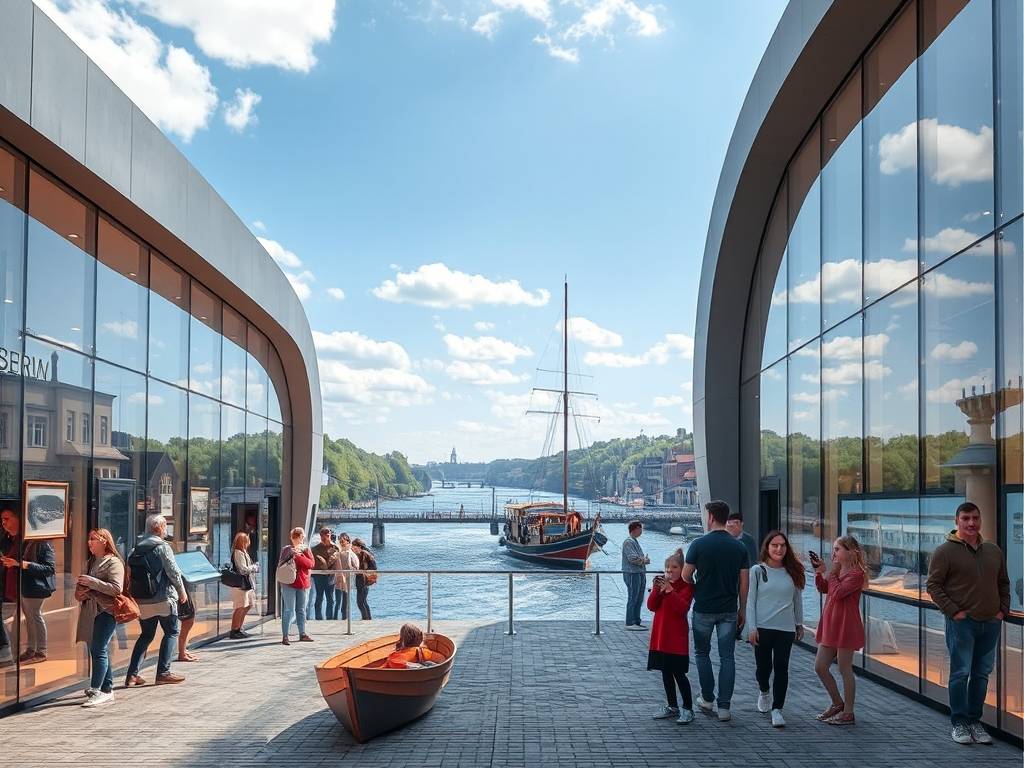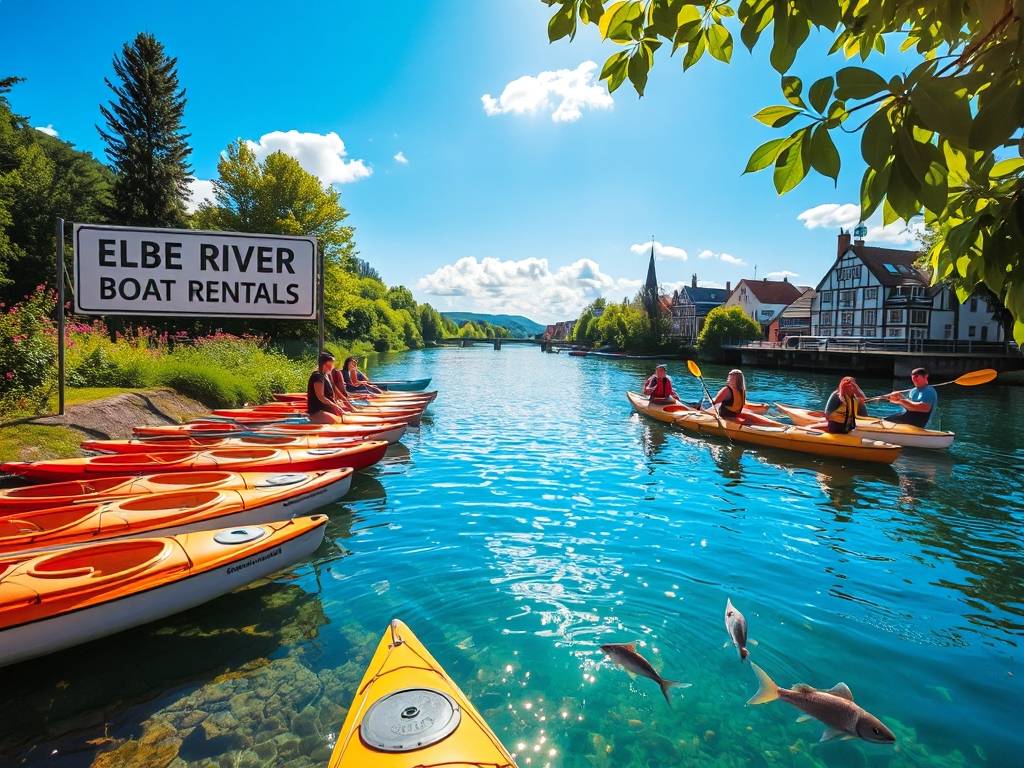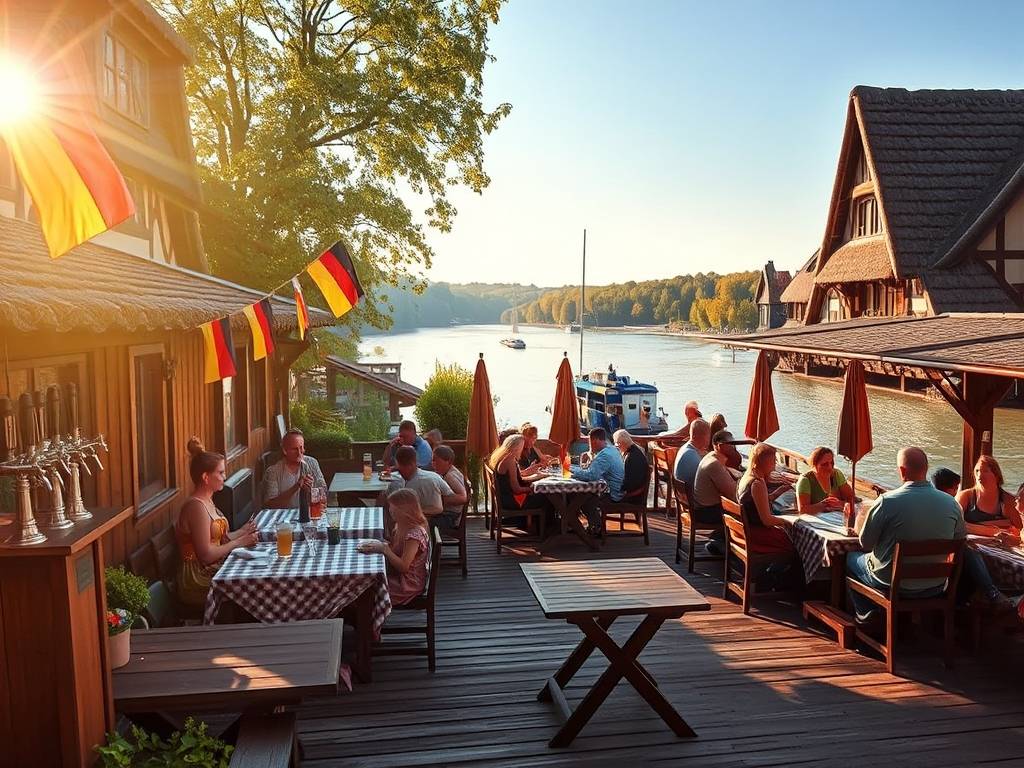Global Travel Information
Elbe River Museum Guide: Learn About the River’s History
The Elbe River: A Journey Through Time at Your Fingertips
There's a magic to rivers. They are more than just water flowing to the sea; they are living, breathing chronicles of our past, present, and future. And few rivers in Europe tell a story as rich and compelling as the Elbe. Winding its way from the rugged peaks of the Czech Republic's Giant Mountains to the vast North Sea coast of Germany, the Elbe River is a central artery of Central Europe. To truly understand its soul, a visit to an Elbe River Museum is not just a recommendation; it's a pilgrimage. This guide is your friendly companion, designed to help you unlock the secrets of this majestic waterway, ensuring your visit is as enriching as it is enjoyable.
So, what can you expect when you step inside a museum dedicated to the Elbe? Forget dusty displays and boring timelines. Modern Elbe River museums are dynamic portals. They are places where history, ecology, culture, and technology converge, offering a holistic overview of the Elbe River's historical significance. You're not just looking at artifacts; you're embarking on a journey.

The Geological and Natural Beginnings
Our story begins not with humans, but with the land itself. Long before kingdoms and trade routes, the Elbe was carving its path. The best museums dedicate space to this primordial era, explaining the powerful geological forces that shaped the Elbe River valley. You'll learn about the ice ages that sculpted its course and the unique ecosystems that emerged along its banks. This foundation is crucial because the river's physical character dictated everything that followed. Discover the unique flora and fauna of the Elbe biosphere reserve, one of the most valuable river landscapes in all of Europe. From the majestic white-tailed eagle to the shy beavers that have made a comeback, understanding this natural heritage is the first step in appreciating why the Elbe is so precious and worth protecting.
The River as a Highway: Trade, Power, and Conflict
As human settlements grew, the Elbe became Europe's original highway. This is where the narrative truly comes alive. Imagine a time before trucks and trains, when the flow of goods and ideas moved at the speed of the current. Exhibits on medieval trade routes on the Elbe River will transport you to a bustling world of merchant guilds and river tolls. You'll see replicas of the low-draft boats that carried salt, cloth, and ore, understanding how cities like Hamburg, Dresden, and Magdeburg rose to power precisely because of their strategic locations on the river.
This era of prosperity, however, was also an era of fortification. The history of fortifications along the Elbe River is a testament to its strategic value. Castles and fortresses, like the imposing Königstein Fortress, perched high above the river, weren't just for show. They controlled passage, collected taxes, and served as formidable defenses. The river was a source of wealth and a line of defense, a duality that defined centuries of Central European history.
Navigating the Waters: Engineering and Shipbuilding
How did people actually navigate this powerful river? The answer lies in the fascinating evolution of Elbe River navigation and shipbuilding. Museums often feature detailed models of ships from different eras—from simple rafts and sailing vessels to the iconic paddle steamers of the 19th century. You can explore the development of Elbe River paddle steamers, a technology that revolutionized travel and is still lovingly preserved today in Dresden, offering nostalgic trips. This section also tackles the immense engineering challenges: the building of canals, the regulation of the river's often-unpredictable flow, and the creation of the modern port of Hamburg, one of the world's largest. It's a story of human ingenuity triumphing over nature, while also learning to respect its limits.
The Darkest Chapters: The Elbe in the 20th Century
A honest museum does not shy away from difficult history. The 20th century left deep scars on the Elbe landscape. The river became a front line in two world wars and, later, the impact of the Cold War on the Elbe River. Perhaps the most poignant moment in any Elbe museum is the discussion of the meeting at Torgau, where American and Soviet troops famously shook hands in 1945. This symbol of hope was quickly overshadowed as the Elbe became part of the Iron Curtain, the deadly border between East and West Germany for decades. Learning about this period, including the environmental degradation of the Elbe during the industrial era, is essential. It highlights how political strife and unchecked industry brought the river to an ecological brink, setting the stage for one of its most inspiring chapters: its recovery.
Restoration and Hope: The Modern Elbe
The story of the Elbe is ultimately one of resilience. After the fall of the Berlin Wall, a monumental effort began to heal the river. This is where you'll learn about the ongoing Elbe River restoration projects and conservation efforts. Interactive displays might show how wastewater treatment was improved and how floodplains were reconnected to create natural buffers against flooding. The importance of the Elbe for sustainable transportation is a key topic, balancing modern economic needs with ecological responsibility. This section answers the vital question: "What is being done to protect the river today, and how can I help?" It transforms your visit from a passive history lesson into an inspiring call to action.
Planning Your Visit: Making the Most of Your Trip

To fully solve your questions about visiting, here’s a quick, practical guide. Before you go, check the museum's website for special exhibitions on topics like "Celtic Settlements along the Elbe" or "The Future of Inland Waterways." Many museums offer guided tours of Elbe River museums which can provide deeper insights you might miss on your own. Don't just rush through; take your time with the multimedia exhibits, which often include breathtaking aerial footage of the river's course.
And remember, the museum is just the beginning. Use it as a launchpad. Afterwards, take a walk along the riverbank, cycle a section of the Elbe Cycle Path, or board one of those historic paddle steamers. Seeing the river with your own eyes, armed with the knowledge from the museum, will make the experience infinitely richer. You'll look at a castle on a hill and understand its economic role. You'll see a bird soaring overhead and know its story of comeback. You'll understand the river not just as water, but as a timeless narrative of nature, human ambition, conflict, and redemption. The Elbe's story is waiting for you. Go and listen.
相关文章
- Elbe River Wine Regions: Vineyards Near the Waterway
- Elbe River Beer Gardens: Relax with a Pint by the River
- Elbe River Boat Rentals: Rent a Kayak or Canoe Today
- Elbe River Bridge Tours: Iconic Crossings to Explore
- Elbe River Night Views: Best Spots for Evening Photography
- Elbe River Sunrise Locations: Watch the Dawn Over the Water
- Elbe River Budget Travel Guide: Save Money on Your Trip
- Elbe River Luxury Travel: Premium Experiences Along the River
- Elbe River Student Travel Tips: Affordable Adventures
- Elbe River Senior Travel Guide: Comfortable Options for Older Visitors
发表评论
评论列表
- 这篇文章还没有收到评论,赶紧来抢沙发吧~


